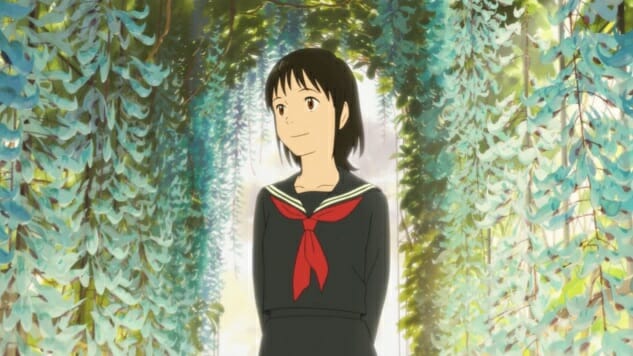Mirai

In the cosmology of human experience, every child born is at once the heart and center of their own universe. Through no fault save their own innocence, one might imagine themselves the sun, resplendent in glow of their parent’s love and admired by every person imaginable. To the mind of such a child, the birth of a sibling must seem akin to the advent of a rival star, stealing across the sky to siphon away their parents’ affection. Herein lies a lesson in love.
Cosmic analogies aside, the essence of this story is the premise of Mamoru Hosoda’s Mirai, the seventh film from the veteran director and the latest of his explorations probing at the subject for which he is best known for—family. The film follows Kun, a four-year-old boy who struggles to cope with the birth of a baby sister, Mirai, into his small family. His cries for attention spurned and selfish outbursts rebuked, Kun retreats into an imaginary world surrounding the garden situated at the heart of his family home where he is visited by visions of his loved ones from both the past and future. It is through them that Kun slowly begins to grasp how Mirai’s life and his own are links in a larger chain of consequence, entwined together by a force as resolute as it is ephemeral.
Like his contemporary, Makoto Shinkai, Hosoda is too often overzealously trumpeted as the living successor to Hayao Miyazaki, founder of the legendary Studio Ghibli and popularly dubbed the adopted patriarch of anime cinema, if not anime, period. And, much like in the case of Shinkai, the accolade doesn’t necessarily square with the reality of its subject. To be frank, Hosoda is his own man—with his own career, his own aesthetic interests, holistically marked by its own merits and foibles. What is most fascinating about his work has nothing to do with his one-time association with Ghibli during the production of Howl’s Moving Castle, but rather with the fact that of his contemporaries, Hosoda’s body of work is arguably the most transparently autobiographical of any anime director working today.
The premises of Hosoda’s original films all in some way parallel to that of an experience born out of the director’s own life. While partially inspired by his directorial debut of the 2000 Digimon movie Our War Game!, 2009’s Summer Wars was more or less siphoned from the Hosoda’s own experience of meeting his wife’s family for the first time following their engagement. Wolf Children (2012) was a cinematic love letter to the memory of his deceased mother, but also to the prospect of one day becoming a father himself. Hosoda’s last film, 2015’s The Boy and the Beast, was produced just after the birth of his first child and, as the director confided in our recent interview with him, was inspired by him grappling with the question of how a person changes and should be changed in order to offer their newborn child a future. So, too, is it with Mirai, a film that, once again, pulls from Hosoda’s lived experience, this time of having witnessed his son’s adverse reaction to the birth of his second child.
Mirai is restrained in its concept, especially when compared to the fantastical escapism of Hosoda’s previous work. While the film dabbles in the aforementioned moments of temporal and spatial transportation, these moments themselves are prefigured throughout the film as the overactive imaginings of a child’s mind and played for comedy rather than pathos. In reality, the story takes place entirely within Kun’s modernist family home whose very construction, courtesy of real-life architect Makoto Tanijiri, reiterates Mirai’s broader themes of familial causality and connection.